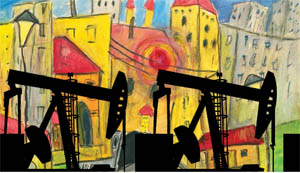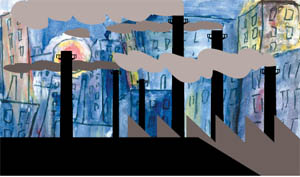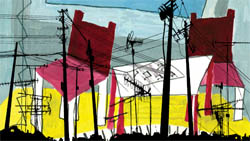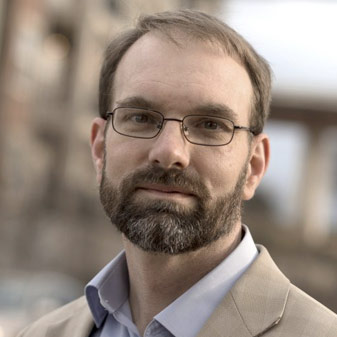In 1982, some 450 activists were arrested protesting the construction of a hazardous waste facility in Warren County, N.C., a primarily poor, black community. Since that time, the “environmental justice” movement has shined a spotlight on the disproportionate environmental burden borne by minorities and the poor. Researchers have confirmed that poor people and minorities do indeed live in polluted neighborhoods more often than other groups do. This pattern has been found in numerous contexts. For example, disadvantaged groups live closer to hazardous waste facilities and landfills and live in communities with more air pollution.
These findings have sparked a broad activist movement that has won several policy victories. At the federal level, President Clinton’s Executive Order 12898, still in force, requires nondiscrimination in federal environmental programs and focuses federal resources on low-income and minority communities. In addition, several environmental justice acts have been introduced in Congress. At the local level, stakeholders have won a bigger voice in the approval process for new polluting facilities and have filed lawsuits against governments for discriminatory environmental enforcement. In one prominent case, they forced California’s Southeast Air Quality Management District to settle a suit over the geographic distribution of trades under its pollution trading program.
But before resorting to political and legal remedies for environmental inequity, it is crucial that we understand the social mechanisms underlying it. Such mechanisms determine the nature and locus of any injustice, how a policy affects the demographic pattern of exposure to pollution (if at all), and who bears the costs and reaps the benefits of any cleanups.
Why the Poor Live near Pollution
There are at least four mechanisms that potentially explain the disadvantaged groups’ higher exposure to pollution. First, disadvantaged groups have less political power. Consequently, they may be less successful at lobbying government agencies to protect their communities from pollution, making it more likely that permits for dirty facilities are approved in poor or minority communities. Likewise, existing facilities may be monitored less stringently for compliance with environmental regulations. Reinforcing these effects, polluting firms may be more attracted to such communities precisely because they know they will not be scrutinized as closely as in other areas. There is some evidence for this effect, with pollution increasing in areas with lower voter turnout. If the correlation between pollution and demographics lies in these mechanisms, then it arises from government failures. Either reforms are required or, alternatively, non-governmental mechanisms for determining pollution patterns should be considered.
Second, where a firm decides to locate may have nothing to do with demographics, but the correlation may arise in response to pollution. In particular, if pollution drives down real estate values, people looking for inexpensive housing may move to polluted neighborhoods. Poorer households are particularly likely to do this. Though they may not like pollution, they may be willing to put up with it in exchange for lower housing costs. Poorer households experience lower environmental quality for the same reason that they enjoy less of most goods: simply because this is what it means to be poor.
Cleaning up pollution in disadvantaged communities may actually harm incumbent residents.
Similarly, a third mechanism may be that there are characteristics about some communities that simultaneously at just as disadvantaged groups may prefer lower land prices, so too may polluting facilities. Moreover, land prices may be lower near transportation corridors like highways or railroads. Poor people live near them because of the low housing costs and polluting facilities do because of lower transportation costs for manufactured goods or wastes. And finally, both poorer households and polluting facilities may be mutually attracted to low-wage, low-skilled labor markets. In this case, the correlation between pollution and disadvantage groups again arises from the fact that these groups have lower incomes. The effect is reinforced by the unhappy coincidence that some affordable features of the inexpensive communities are actually attractive to polluters.
A fourth mechanism may be a direct market in pollution. Such markets can arise if property rights to a clean environment are well defined. The rights may be codified explicitly by law or may be recognized implicitly as part of a common tradition. In any case, when rights are well defined, polluters will have to contract to dispose of their pollution. Where they do so will depend on the prices they can negotiate, which in turn will depend on the willingness of different parties to take on pollution. Again, if disadvantaged groups prioritize money (and the things it can buy) over a clean environment, they may be more likely to accept lower compensatory payments for pollution. Accordingly, polluters would be more likely to strike bargains in such communities. In other words, the distribution of pollution will be the result of market activities. In fact, there is evidence that this process plays at least some role, with about half of landfills making some payments to their host communities.
The Market Strikes Back
But even if property rights are not well defined, markets will still determine where pollution occurs, but without explicit negotiation over the pollution itself. 
Moreover, cleaning up pollution in disadvantaged communities may actually harm incumbent residents. The cleanup is likely to trigger gentrification and increase housing costs. These increased housing costs may more than offset the benefit of a cleaner environment. Of course, for those who own their homes, this appreciation represents an appreciation in their housing assets. But most poor households are renters. For them, gentrification represents an increase in rents, which benefits only absentee landlords. Such unintended consequences of environmental cleanups are now a major concern of local stakeholders, as seen in a recent report by the National Environmental Justice Advisory Council.
Empowering the Poor
Many of these mechanisms imply that the exposure of different groups to different levels of pollution arises in part from their individual choices. The word “choice” here must be interpreted carefully. It is not meant to imply that poor minority households are in the same position as rich households when it comes to the choices they face. It does suggest, however, that they are competent to work out how best to improve their own welfare, given the opportunities that are available to them. By choosing to live in more polluted but lower-cost areas, they are revealing that inexpensive housing is a higher priority than environmental amenities. Similarly, by accepting compensation to host polluting facilities, they are revealing that they prefer those compensatory payments.
Either way, because a market is involved in distributing environmental quality to different groups, people pay a price, possibly a hidden one, to obtain a cleaner environment. When an outside group (such as a government regulator) decides to force a cleanup, it may impose that price on the very groups who would rather not pay for it. If the price is giving up the compensatory payments from polluters, whoever enjoyed those benefits most will pay the price. If the price is higher housing costs, then poor renters will pay the price. By contrast, when households operate in a free market for environmental resources, they will only purchase (or sell) a cleaner environment when it is truly to their advantage. Policies that benefit the poor the most will leverage their ability to help themselves, by giving them more property rights or other resources that can enable them to take advantage of market opportunities.
This article is based on a longer essay “Environmental Justice: Opportunities through Markets.”






